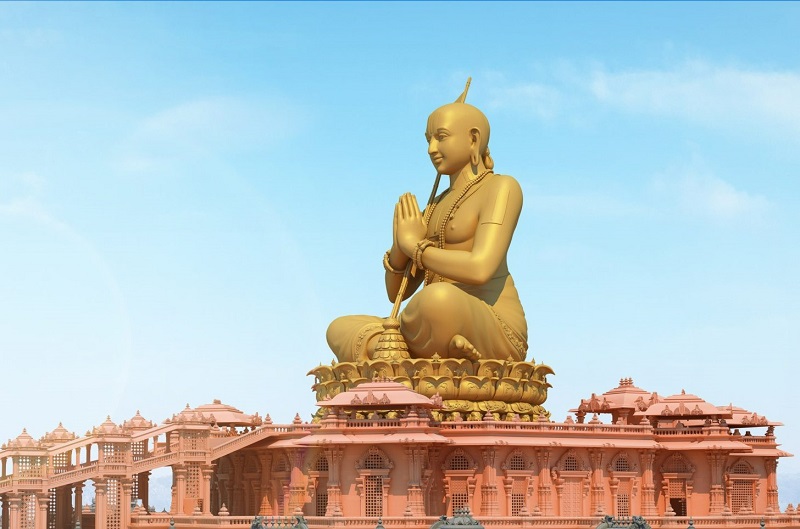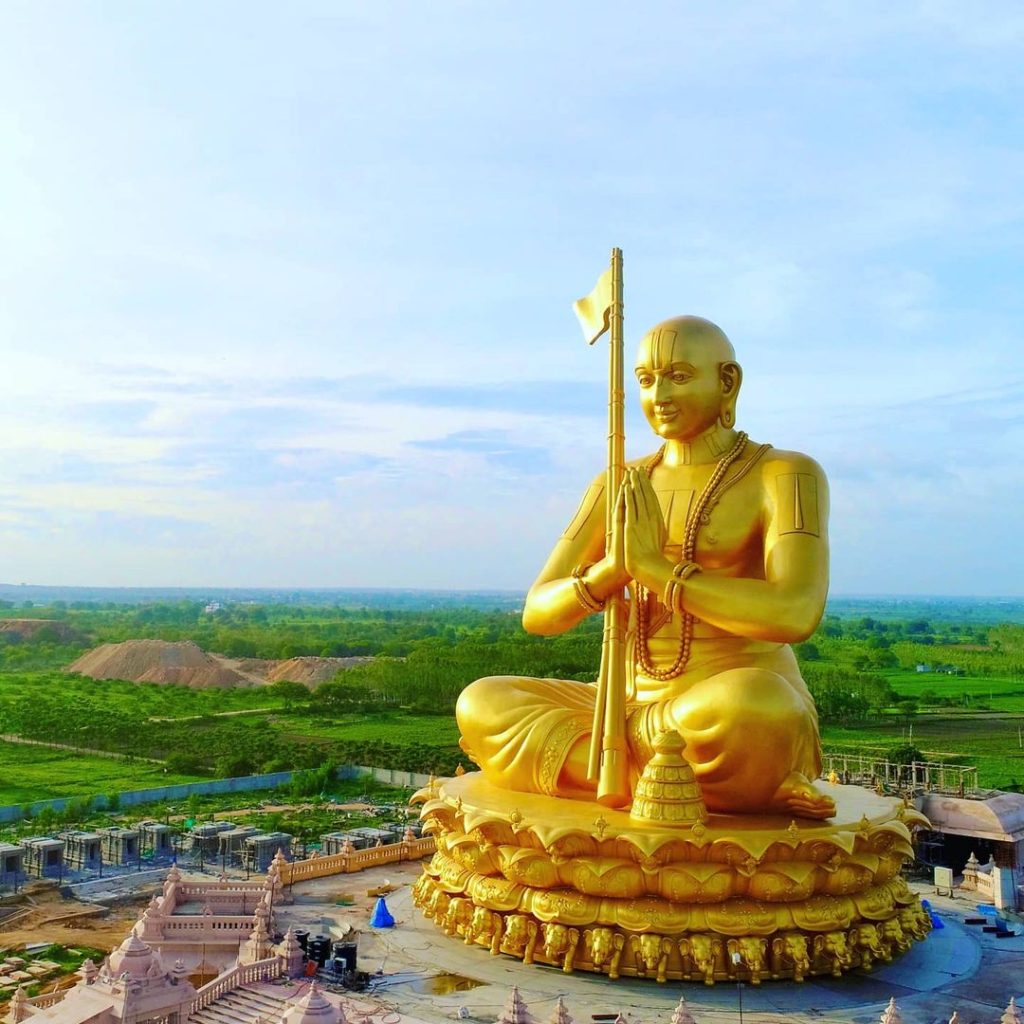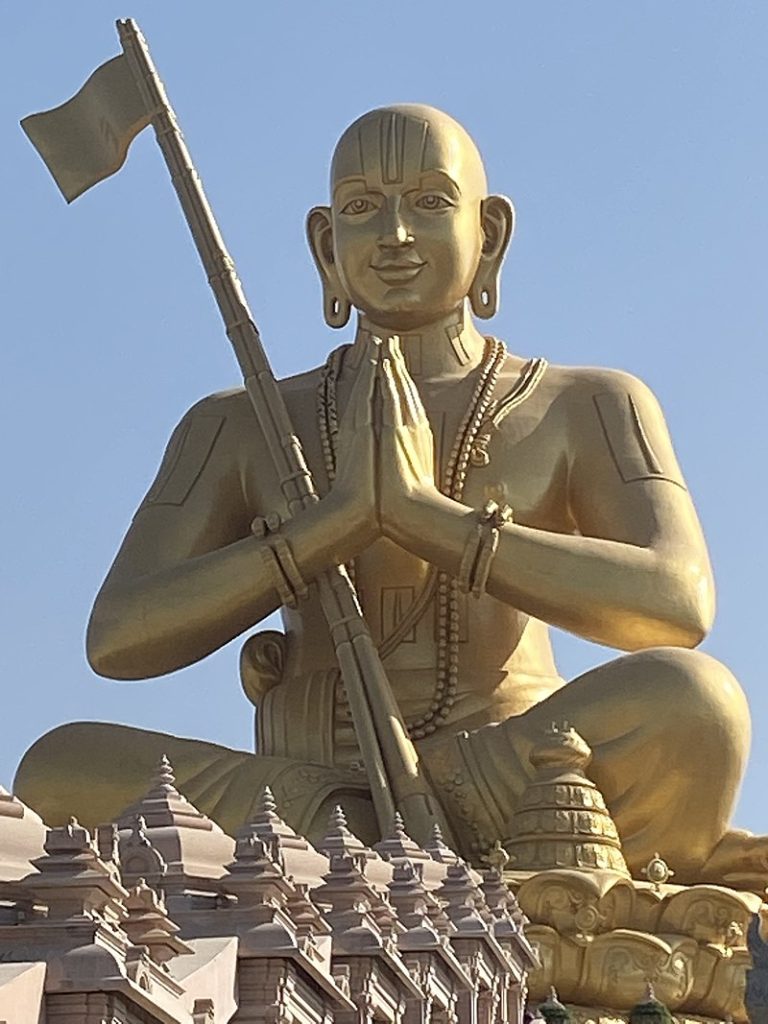Introduction

The Statue of Equality is a magnificent statue located in Hyderabad, History of India, built to commemorate the great teacher Ramanujacharya in Indian history. This statue is known for its spectacular scale and unique design, attracting pilgrims and tourists from all over the world. This article will introduce the history, design, symbolic significance of the statue of equality. And its important position in Culture of India and religious tradition.
History and Background
The “Statue of Equality” was built in memory of Ramanujacharia, a famous educator and philosopher in History of India, who was honored as a prophet and sage. Ramanu Jacharia lived in South India in the 11th century. His teachings emphasized that all people are equal and should enjoy equal respect and rights regardless of caste, social status or wealth. He had a profound influence on Indian philosophy and culture, and became an important part of the Hindu tradition.
In memory of this great educator, the Indian government has decided to build a magnificent statue in Hyderabad to demonstrate the impact of his teachings and traditions on Indian society.
Design and Construction of Statue of Equality

The design of the “Statue of Equality” was created by the famous Indian sculptor V Ganapati Stuapati is responsible for it. The height of this statue reaches 216 feet (approximately 66 meters), including the base. It composed of a 108 foot high pedestal and a 108 foot tall statue, symbolizing the sacred number 108 in Hinduism.
The statue itself carved from a single piece of black granite, which is a remarkable feat. The entire statue displays Ramanujacharia’s sitting posture, holding sacred symbols and scriptures, showcasing his wisdom and compassion.
The construction of the ‘Statue of Equality’ is a complex project involving hundreds of craftsmen and technicians, which took several years to complete. Its magnificent design and exquisite craftsmanship make it a precious work of Indian sculpture art.
The Symbolic Meaning of Statue of Equality
The “Statue of Equality” built to commemorate the teachings and contributions of Lamanujacharia. It represents the spirit of equality in Culture of India and religious traditions. Ramanujacharia emphasized that everyone is equal, regardless of caste, social status, or wealth. And everyone has the right to equal respect and opportunities. This idea plays an important role in Culture of India’s culture and religion, affecting the development and progress of Indian society.
The statue of equality also symbolizes the spirit of tolerance and inclusiveness. The teachings of Ramanujacharia encourage people to understand each other, coexist harmoniously, and promote social unity and progress. This concept still holds significant significance in today’s diverse and multicultural world.
Religious and Cultural Significance

The statue of equality is an important religious and cultural site that attracts pilgrims and tourists from different religions and backgrounds in India and around the world. It has become a symbol of faith and piety, attracting thousands of people to visit and pray.
At the same time, this statue has also become an important highlight of India’s tourism industry. It is attracting many tourists to experience its grandeur and solemnity. It has become a landmark building in Hyderabad, adding unique charm to the city.
Conclusion
The ‘Statue of Equality’ is a solemn and magnificent statue built in memory of Indian educator Ramanujacharia. With its unique design and symbolic significance, this statue has become a shining pearl in Culture of India and religious tradition. It attracts many people to visit and experience its solemn and tolerant atmosphere. The “Statue of Equality” will continue to play an important role in Culture of India’s culture and convey to the world the essence of India’s ancient wisdom.

